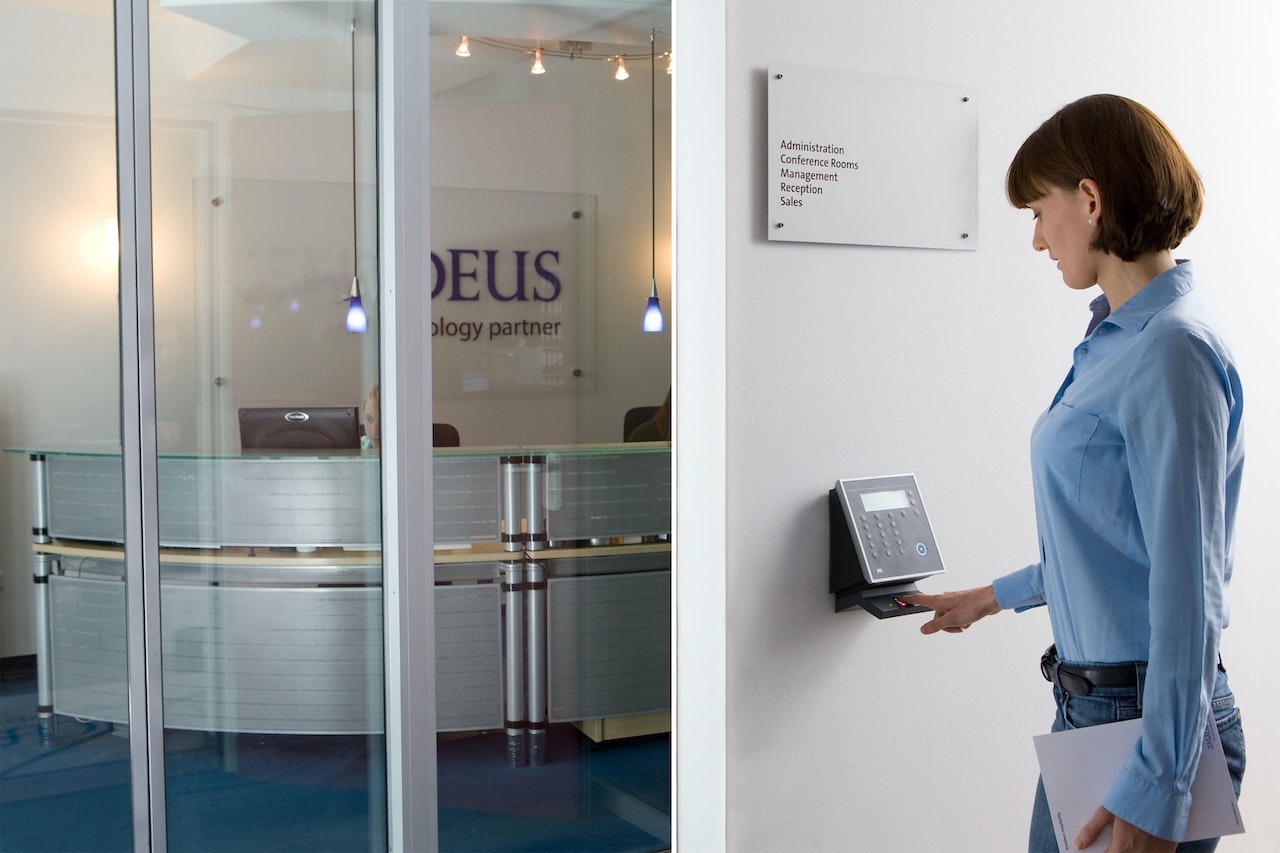A tremendous amount of thought and planning is involved in keeping an area secure–and the more sensitive the area, the more moving parts are needed to keep everything protected. That’s where security design comes in. Coordinating equipment and operations, security personnel use security design to create a cohesive, reliable system that protects people and assets from a variety of threats. Read on to learn more about security design, familiarize yourself with examples, and discover the guiding principles of this practice.
What is Security Design?
Security design refers to the process of planning and implementing measures to protect a system, infrastructure, or environment from potential threats and vulnerabilities. It involves the creation and integration of various security controls, mechanisms, and practices into the design of a system or facility to ensure its protection and resilience against potential risks.
In the context of physical security design, considerations may include access control systems, video surveillance, alarms, locks, barriers, and other measures to protect physical assets and restrict unauthorized access.
Operational security design focuses on developing processes, policies, and procedures to ensure secure operations and protect against risks arising from human error, insider threats, social engineering, and other vulnerabilities. This may involve security awareness training, incident response planning, access management, and continuous monitoring and assessment of security measures.
Overall, security design aims to identify potential risks and vulnerabilities, assess their impact, and implement appropriate countermeasures to reduce risks and enhance the overall security posture of a system, infrastructure, or environment. It is an iterative and ongoing process, as security needs to adapt to evolving threats and technologies.
Why is Security Design Important?
Well-executed security design offers enormous benefits to businesses, institutions, and more. A robust security design often does more than keep a location or personnel secure.
Risk Mitigation
Security design primarily helps identify and mitigate potential risks and vulnerabilities in a business, infrastructure, institution, or environment. By implementing appropriate security controls, organizations can reduce the likelihood and impact of security breaches, unauthorized access, data loss, harm to personnel or clients, and other security incidents.
Protection of Assets
Security design ensures the protection of valuable assets, like buildings, equipment, valuables, people or personnel, and more. By implementing effective security measures, organizations can prevent theft, damage, or unauthorized use of their assets.
Business Continuity
Security design plays a critical role in maintaining business continuity by preventing disruptions caused by security incidents, natural disasters, or other threats. By implementing appropriate security measures, organizations can minimize downtime, recover quickly from incidents, and ensure the continuity of operations.
Cost Savings
While implementing security measures incurs upfront costs, it can lead to long-term cost savings. By proactively addressing security risks, organizations can prevent financial losses from security breaches, legal liabilities, regulatory fines, and reputational damage that may be far more costly to rectify.
Examples of Security Design
Effective security design often involves several moving parts. Here are some common examples of security design.
Access Panels
These systems include measures such as keycards, biometric scanners, or PIN codes to restrict access to authorized individuals. Access control can be implemented at building entrances, elevators, as well as specific areas or sensitive zones within the building.
Video Surveillance
CCTV cameras strategically placed throughout the building can deter criminal activities and provide a means for monitoring and recording activities within and around the premises. Video surveillance can also be submitted as evidence in the event of illegal activity.
Learn more: How to Create a Building Security Plan | Security Professional's Guide to CCTV
Intrusion Detection Systems
These systems use sensors and alarms to detect unauthorized entry or intrusion attempts. They can include door and window sensors, motion detectors, and glass break detectors.
View course: Security Operations: Intrusion Detection
Perimeter Security
Measures to secure the building's perimeter include fences, barriers, bollards, and gates to prevent unauthorized access and control vehicular traffic. Security lighting can also be optimized to enhance visibility and deter intruders.
View course: Security Operations: Perimeter Security
Secure Entrances
Measures such as security personnel, turnstiles, security screening checkpoints, metal detectors, or X-ray machines can be implemented at building entrances to control access and detect prohibited items.
Emergency Response Systems
Building security design includes the installation of emergency response systems like fire alarms, smoke detectors, sprinkler systems, and emergency lighting. These systems help detect and respond to emergencies promptly.
Learn more: Lockdown Procedures for the Workplace: Security Officer Guide
Visitor Management Systems
These systems help monitor and control visitors entering the building. They can include visitor registration, identification checks, and temporary access badges.
Security Personnel
Trained security personnel can be deployed to monitor and patrol the premises, respond to incidents, and provide a visible security presence. Armed and unarmed security guards are a crucial part of security operations in many buildings.
Learn more: How to Build a Security Team and Security Guard Training Program
9 Security Design Principles
Security design principles are fundamental guidelines and concepts that guide the process of designing secure systems, infrastructure, or environments. These principles help ensure that security is integrated into the design from the beginning, rather than being an afterthought.
1. Defense in Depth
This principle emphasizes the use of multiple layers of security controls and measures. By employing a layered approach, even if one security control fails or is bypassed, there are additional layers of defense to prevent or mitigate the impact of a security breach. For example, an office building might have a secure entrance, access panels, CCTV, and security guards all working to keep the building safe.
2. Least Privilege
The principle of least privilege states that individuals or systems should only have the minimum necessary privileges or access rights required to perform their tasks. This reduces the potential for unauthorized access or misuse of resources. This looks like limiting access to specific rooms or floors of buildings, disallowing visitors during certain times of the day, and more.
3. Fail-Safe Defaults
Systems and components should be designed with secure default configurations. This means that if a specific security configuration is not explicitly set, the system defaults to the most secure option. It prevents potential vulnerabilities due to misconfigurations or oversight.
4. Separation of Duties
This principle ensures that critical tasks are divided among multiple individuals or roles to prevent unauthorized actions or fraud. Separation of duties reduces the risk of a single individual having complete control or access to sensitive functions or information. This might look like personnel on a management level all having access to the safe or carrying a master key to the store.
5. Defense Against Known Vulnerabilities
As mentioned earlier, security design should iterate on itself and improve constantly in order to remain effective. Iterative security design should take into account known vulnerabilities and threats. By implementing appropriate security controls, such as patches, updates, and security patches, organizations can protect against known vulnerabilities and keep systems up to date.
6. Economy of Mechanism
This principle advocates for simplicity in system design and implementation. The idea is to minimize complexity, as complexity often introduces more opportunities for security vulnerabilities. A simpler design is easier to understand, analyze, and secure.
7. Security Without Obscurity
This principle suggests that security should not rely solely on keeping the details of the system design or implementation secret. Instead, security should be based on well-understood and widely tested principles and mechanisms. Relying on obscurity can create a false sense of security and is generally considered less effective.
8. Privacy by Design
This principle promotes the integration of privacy protections into the design of systems, products, and processes from the outset. It emphasizes the proactive consideration of privacy implications, data protection, and user consent throughout the design lifecycle. This looks like CCTV notices, encryption of passcodes, and more.
9. Continuous Monitoring and Improvement
Security design is an ongoing process. Systems should be continuously monitored, assessed, and improved to address emerging threats and vulnerabilities. Regular audits, penetration testing, and security assessments help identify areas for improvement and ensure that security controls remain effective.
Security by Design
Security design is essential for mitigating risks, protecting assets and sensitive information, ensuring business continuity, and reducing long-term costs. It is a critical component of any organization's overall risk management and operational strategy. Security professionals should be well-versed in security design principles so they can excel at their roles.
Ready to learn more? NITA provides a convenient online training course that can be accessed anytime, offering security professionals an opportunity for continuous education in security design.
View the Security Design training course from NITA →
You might also like:
Our enrollment counselors are here to answer any questions you might have about our state- and board-approved status, pre-licensing training, or professional development programs.




